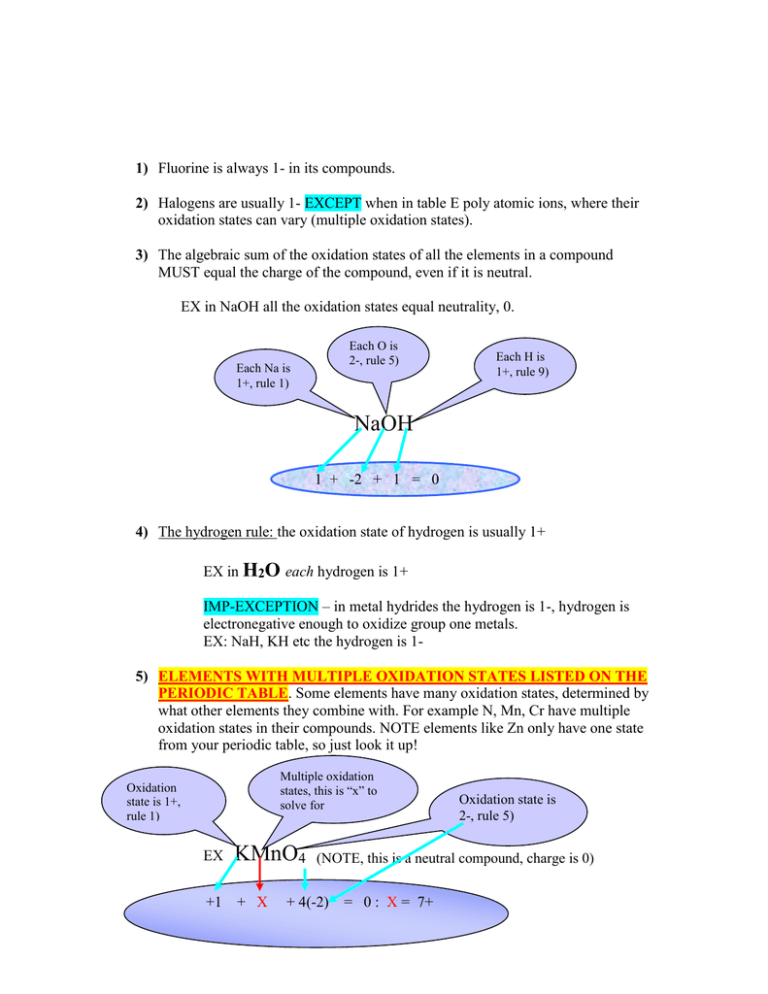oxidation states can vary (multiple oxidation states). 1)
advertisement

1) Fluorine is always 1- in its compounds. 2) Halogens are usually 1- EXCEPT when in table E poly atomic ions, where their oxidation states can vary (multiple oxidation states). 3) The algebraic sum of the oxidation states of all the elements in a compound MUST equal the charge of the compound, even if it is neutral. EX in NaOH all the oxidation states equal neutrality, 0. Each O is 2-, rule 5) Each Na is 1+, rule 1) Each H is 1+, rule 9) NaOH 1 + -2 + 1 = 0 4) The hydrogen rule: the oxidation state of hydrogen is usually 1+ EX in H2O each hydrogen is 1+ IMP-EXCEPTION – in metal hydrides the hydrogen is 1-, hydrogen is electronegative enough to oxidize group one metals. EX: NaH, KH etc the hydrogen is 15) ELEMENTS WITH MULTIPLE OXIDATION STATES LISTED ON THE PERIODIC TABLE. Some elements have many oxidation states, determined by what other elements they combine with. For example N, Mn, Cr have multiple oxidation states in their compounds. NOTE elements like Zn only have one state from your periodic table, so just look it up! Multiple oxidation states, this is “x” to solve for Oxidation state is 1+, rule 1) EX KMnO4 +1 + X Oxidation state is 2-, rule 5) (NOTE, this is a neutral compound, charge is 0) + 4(-2) = 0 : X = 7+





